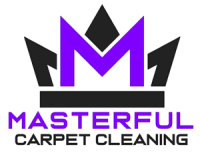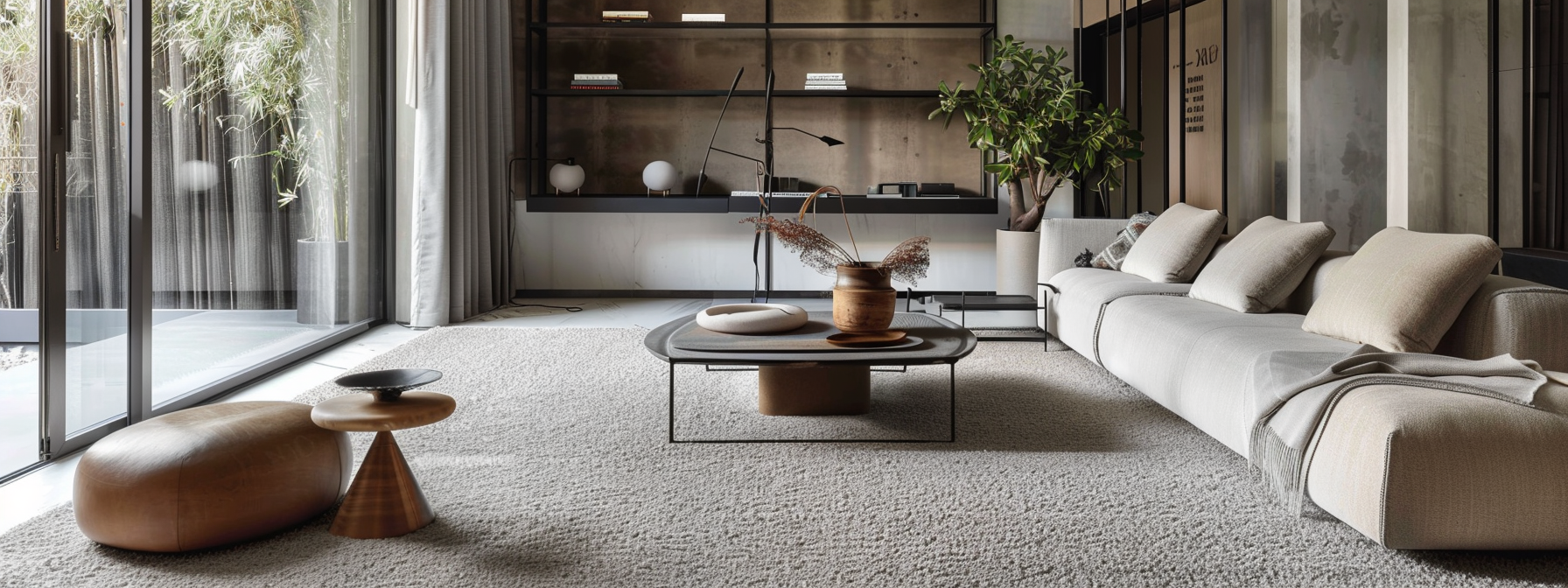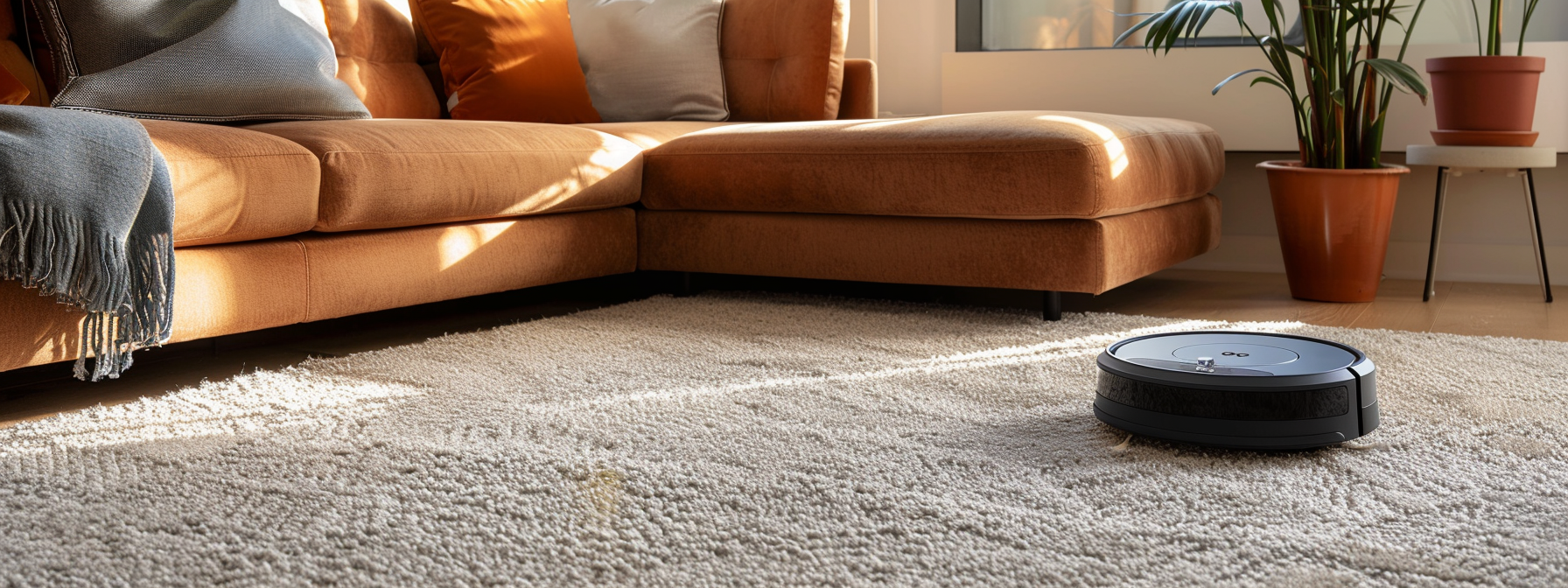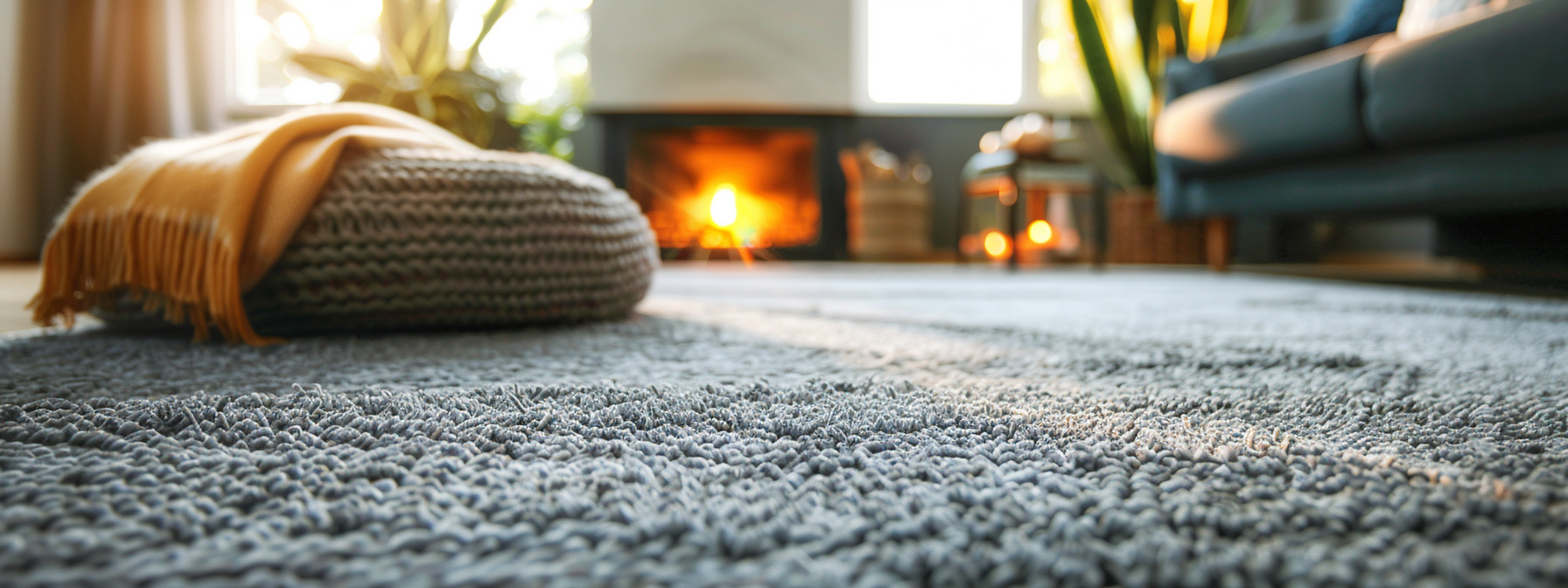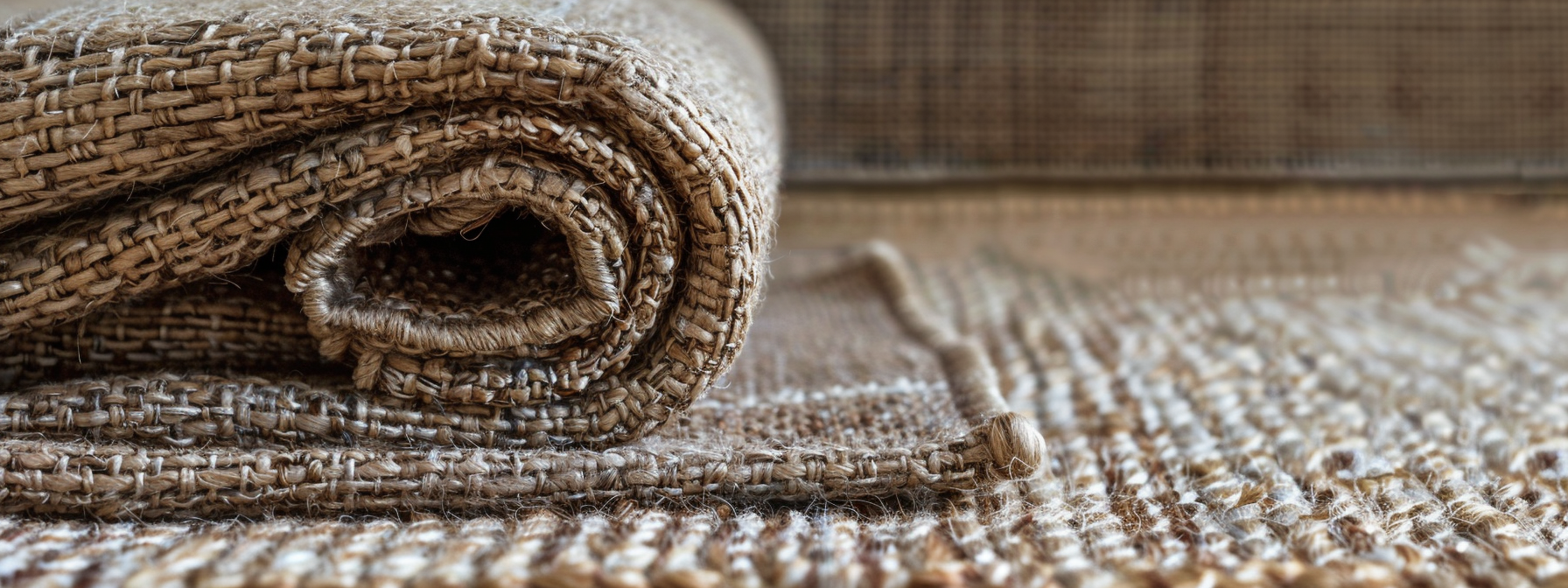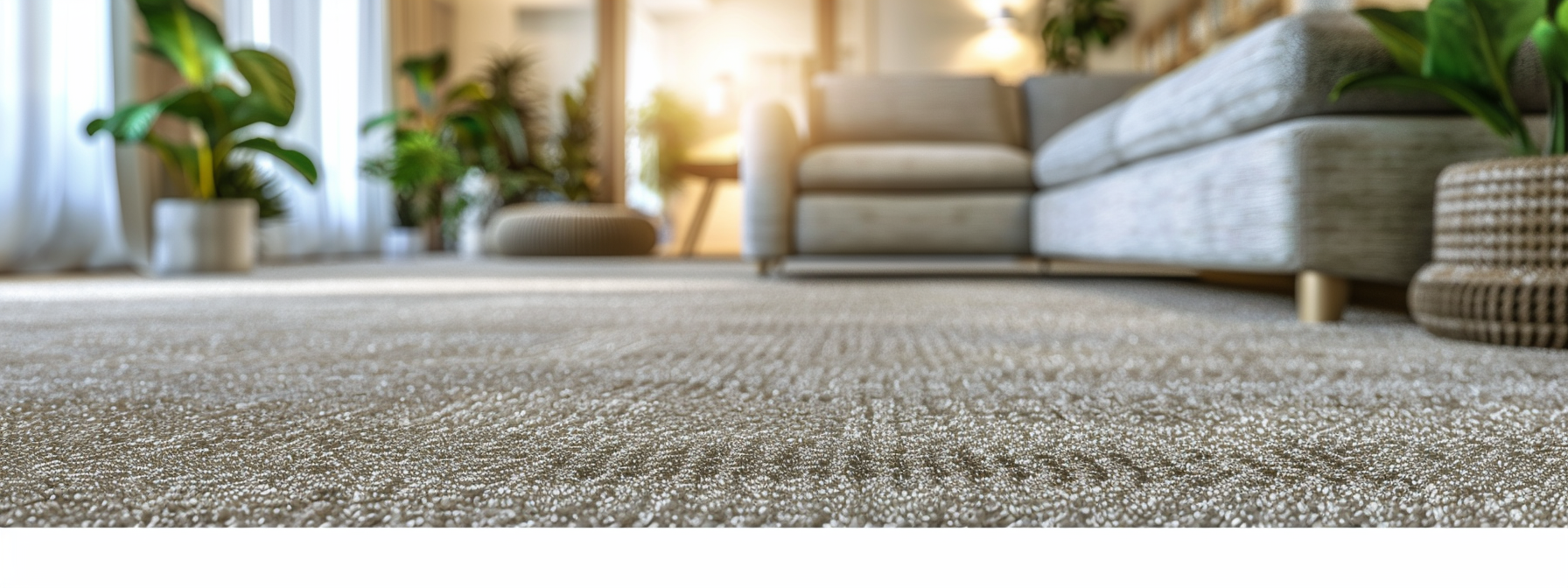Daily Carpet Care: Simple Steps to Keep Your Carpets Looking New

Carpets are not just floor coverings; they’re substantial investments in the comfort and style of your home. Like any investment, carpets require maintenance to protect their value. Regular upkeep helps avoid the high costs associated with premature replacements, making carpet care an economically sound practice.
Carpets act as filters in your home, trapping dust, allergens, and other particles within their fibers. Without daily care, these trapped particles can be released back into your home environment, potentially degrading indoor air quality and posing health risks to you and your family.
Knowing Your Carpet
Choosing the right carpet for your home extends beyond color and pattern; it’s about finding the material that fits your lifestyle and ease of maintenance. Carpets, with their diverse types and textures, form the fabric of our living spaces. From the luxurious warmth of wool to the durable ease of synthetics, each type presents unique care needs and longevity profiles.
Natural Fibers vs. Synthetic Fibers
Carpets are predominantly made from two material types: natural fibers and synthetic fibers. Natural fibers, including wool and silk, are prized for their softness, durability, and eco-friendly appeal. Synthetic fibers, such as nylon, polypropylene (olefin), and polyester, offer stain resistance, affordability, and versatility in design.
- Wool (Natural Fiber): Renowned for its durability and luxurious feel, wool carpets are naturally stain-resistant and can last for decades with proper care. Regular vacuuming and immediate spill management are key.
- Nylon (Synthetic Fiber): Nylon stands out for its resilience and ability to retain color and texture over time. It’s ideal for high-traffic areas, requiring routine vacuuming and periodic deep cleaning to maintain its vibrancy.
- Polypropylene/Olefin (Synthetic Fiber): Known for its exceptional stain resistance, polypropylene is suitable for areas prone to spills. It benefits from frequent vacuuming to prevent oil accumulation and matting.
Pile Types and Textures
The carpet’s pile—how the fibers are attached to the backing—is important in its feel and performance. Common pile types include:
- Berber: Dense, looped fibers make Berber carpets exceptionally durable, ideal for high-traffic zones. They hide dirt well but can be challenging to clean if spills penetrate deep.
- Saxony: With fibers standing straight up, Saxony carpets are plush underfoot, best suited for low-traffic areas. Regular vacuuming can help prevent impressions and dirt buildup.
- Shag: Shag carpets, known for their long, loose fibers, offer a distinctive softness. They require regular, gentle vacuuming to avoid tangling and preserve their fluffy appearance.
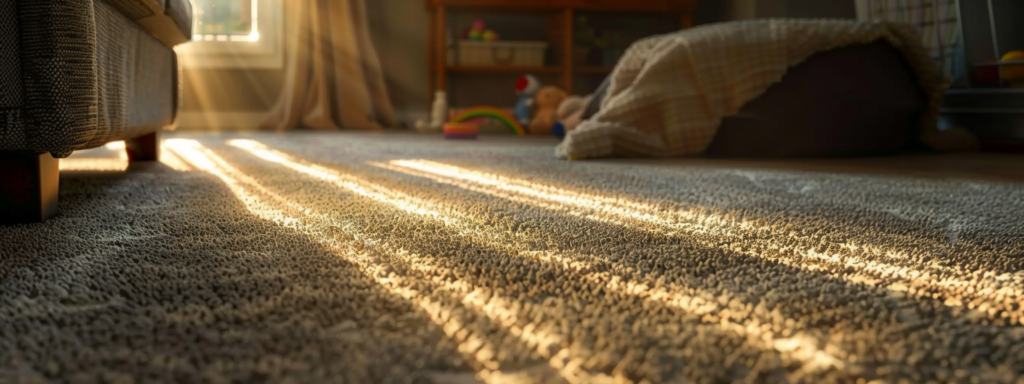
Quick Reference Guide: Maintenance Needs by Carpet Type
| Carpet Type | Vacuum Frequency | Deep Cleaning Method | Considerations |
|---|---|---|---|
| Wool | Weekly | Steam cleaning | Avoid high heat |
| Nylon | Bi-weekly | Hot water extraction | Treat spills quickly |
| Polypropylene | Weekly | Shampooing | Oil-based stains management |
| Berber | Bi-weekly | Dry cleaning | Gentle on loops |
| Saxony | Weekly | Steam cleaning | Use a vacuum without a beater bar |
| Shag | Weekly | Hand wash | Avoid vacuum brushes |
Carpet Choice on Maintenance
The material and texture of your carpet not only define its aesthetic and tactile qualities but also its maintenance journey. For example, wool carpets, while luxurious, require a vigilant approach to spills and professional cleaning to retain their condition. Synthetic options like nylon and polypropylene offer easier cleanup and resilience, making them suitable for families and pet owners.
Durability and Stain Resistance
Each carpet type brings its balance of durability and stain resistance. Wool’s natural oils repel stains, but it can benefit from mothproofing treatments. Synthetics like nylon excel in resilience, easily bouncing back from compression and heavy wear.
Real-Life Care Examples
- Wool Carpet in a Living Room: Frequent vacuuming to remove dust and mitigate wear; immediate blotting of spills with water and mild detergent.
- Nylon Carpet in a Playroom: Routine vacuuming and annual deep cleaning to manage spills and maintain fiber integrity.
- Polypropylene Carpet in a Dining Area: Regular vacuuming and immediate action on spills with a mild cleaner to prevent oil-based stains from setting.
Knowing your carpet goes beyond its initial feel and look; it’s about understanding its life cycle under your care. Choosing the right type and committing to its specific care requirements can ensure your carpet remains a cherished part of your home for years to come.
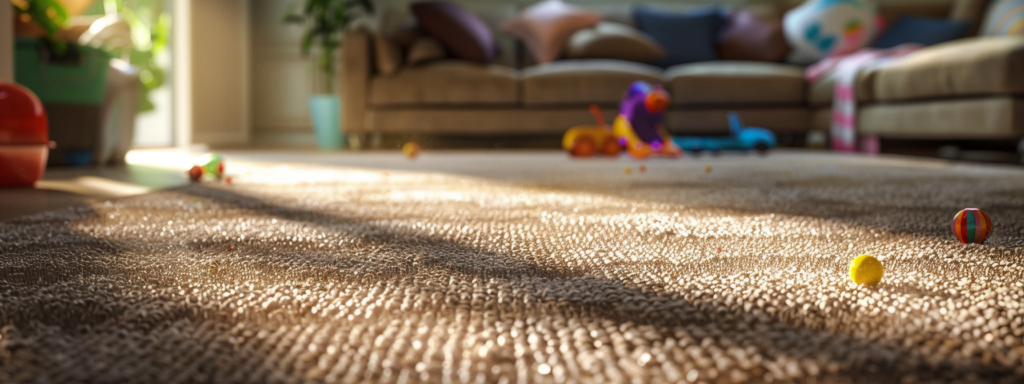
Daily Maintenance Strategies
Your carpet is more than a mere aesthetic element; it’s a living part of your home that interacts daily with its environment and occupants. To maintain its vibrancy, texture, and durability, adopting a routine of daily maintenance practices is essential.
Key Practices for a Pristine Carpet
- Vacuuming: The cornerstone of carpet care, regular vacuuming not only removes dirt and debris but also prevents the embedding of particles that can degrade carpet fibers over time.
- Sunlight Exposure: While natural light can brighten a room, excessive sun can cause carpets to fade. Strategies for minimizing sun damage include using blinds, curtains, or UV-protective window films.
- Spill Management: Immediate response to spills prevents stains from setting, maintaining the carpet’s appearance and hygiene. Employing blotting methods over rubbing will ensure the spill doesn’t spread or penetrate deeper into the fibers.
- Environmental Impact: Opting for eco-friendly cleaning solutions and methods reduces your home’s chemical footprint, contributing to a healthier environment indoors and out.
- Carpet Protectors: These products can extend the life of your carpet by adding a protective layer that repels spills and dirt, making maintenance easier and more effective.
Vacuuming Like a Pro
Achieving professional-level cleanliness isn’t as daunting as it may seem. By understanding your carpet’s specific needs and adjusting your vacuuming techniques accordingly, you can significantly enhance its longevity and appearance.
- Understanding Your Carpet: Different fibers and piles respond best to different vacuum settings. For example, a looped Berber carpet requires a gentler setting to avoid damaging the loops, whereas plush carpets like Saxony may benefit from stronger suction to lift dirt from deeper within the fibers.
- Vacuum Settings and Frequency: Adjust the vacuum height setting based on your carpet’s pile height for optimal dirt extraction. High-traffic areas may need vacuuming as often as daily, while less frequented areas might only require a weekly pass.
- Techniques and Patterns: Vacuum in varying directions to lift and remove dirt more effectively. This approach also prevents the carpet fibers from flattening due to constant traffic.
- Latest Vacuum Technologies: Innovations like HEPA filters capture finer particles, improving air quality. Adjustable vacuums with roller brush and suction control options allow for customization to different carpet types and conditions.
By incorporating these daily maintenance strategies and understanding the nuances of vacuuming your specific type of carpet, you ensure that your carpet remains a source of comfort and beauty in your home.
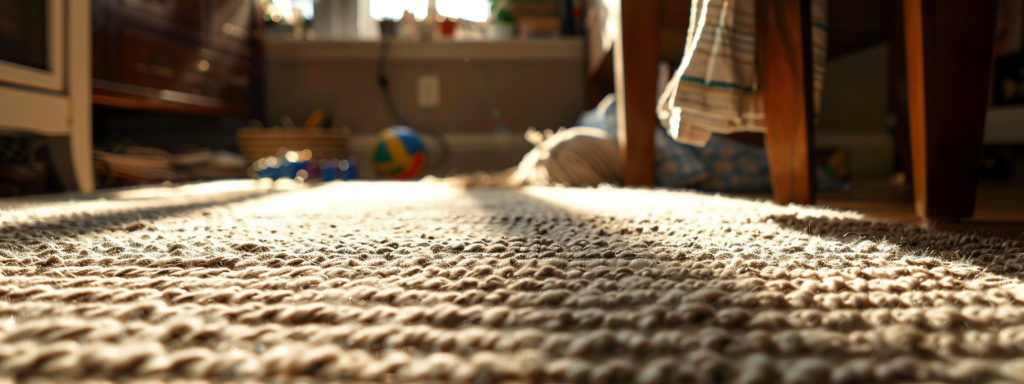
Spot Cleaning and Stain Removal
Stains on your carpet are not just unsightly; they’re also gateways to potential damage and long-term wear if not addressed promptly. Understanding the nature of different stains and the most effective ways to remove them is important in maintaining your carpet’s appearance and longevity.
Key Strategies for Stain Battles
- Immediate Action: The golden rule for stain removal is swift action. The longer a spill sits, the harder it becomes to remove.
- Identifying the Stain: Differentiating between organic, chemical, and grease-based stains is critical, as each requires a unique approach.
- Choosing Your Weapon: Depending on the stain type, decide between commercial removers or homemade solutions for a targeted response.
- Blot, Don’t Rub: Always blot spills gently with a clean, dry cloth to avoid spreading the stain or pushing it deeper into the carpet fibers.
Homemade vs. Commercial Removers
While commercial stain removers are designed for convenience and power, they often contain chemicals that can be harsh on your carpets and the environment. Homemade solutions offer a safe, eco-friendly, and cost-effective alternative for many common stains.
- Wine Stains: Immediately blot the spill, then apply a mixture of water and vinegar before final blotting.
- Coffee Spills: Clean the area with a solution of water and a mild detergent, followed by blotting with a mixture of vinegar and water.
- Ink Stains: Apply isopropyl alcohol to a cloth and gently dab the stain until it lifts, avoiding rubbing to prevent spreading.
Preventative Measures
Incorporating lifestyle tips and minor adjustments to your routine can significantly reduce the risk of stains:
- Strategic Furniture Placement: Rearrange furniture periodically to change traffic patterns and prevent localized soiling.
- Regular Vacuuming: Keeping your carpets clean reduces the likelihood of spills sticking and staining.
- No-Shoes Policy: Implementing a no-shoes policy indoors minimizes dirt and stain transfer onto your carpets.

DIY Carpet Cleaning Solutions
Equipping yourself with a set of homemade cleaning solutions not only prepares you for any spill scenario but also ensures you’re cleaning sustainably. Below are recipes for safe, effective carpet cleaners that can tackle various stains.
General Carpet Cleaner
- Ingredients: 1 teaspoon dish soap, 1 tablespoon white vinegar, 1 cup warm water, 1 teaspoon baking soda.
- Instructions: Combine ingredients in a spray bottle. Spray on the stain, let sit for 10 minutes, and blot with a clean cloth.
Deodorizing Solution
- Ingredients: ½ cup baking soda, 10 drops essential oil of choice.
- Instructions: Mix ingredients and sprinkle over the carpet. Let sit for at least 15 minutes, then vacuum thoroughly.
Grease Stain Remover
- Ingredients: ¼ cup salt, ¼ cup borax, ¼ cup vinegar.
- Instructions: Create a paste, apply to the stain, let it dry, and vacuum.
Safety Precautions
When using homemade solutions:
- Always perform a spot test on a hidden area to ensure colorfastness.
- Wear gloves when handling baking soda or vinegar for sensitive skin.
- Ensure the room is well-ventilated when applying any cleaning solution.
By adopting these daily maintenance strategies and DIY solutions, you empower yourself to keep your carpets in immaculate condition, extending their life and enhancing your living space’s overall health and beauty.
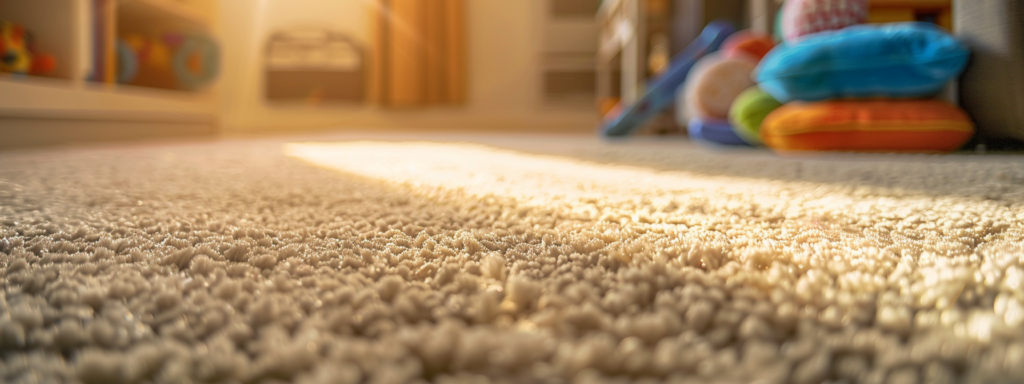
Home Hygiene and Carpet Longevity Through Expert Care
While regular home care routines are important for maintaining carpet cleanliness and appearance, the role of professional carpet cleaning services cannot be overstated. These services not only deep clean but also rejuvenate your carpets, extending their lifespan and ensuring a healthier living environment.
Why Professional Cleaning?
Professional carpet cleaners utilize specialized techniques and equipment to remove deep-seated dirt, bacteria, and allergens that regular vacuuming cannot. These methods, including steam cleaning, dry compound cleaning, and hot water extraction, are effective in maintaining your carpet’s integrity and appearance.
- Steam Cleaning: Also known as hot water extraction, this method injects hot water and cleaning agents into the carpet fibers, then extracts the solution along with the dislodged dirt, ensuring a thorough clean.
- Dry Compound Cleaning: A virtually waterless option, this involves spreading an absorbent compound over the carpet, which is then worked into the fibers to absorb dirt and debris before being vacuumed up.
Scheduling Professional Cleaning
The frequency of professional cleanings can depend on various factors, including foot traffic, pet ownership, and specific carpet materials. A good rule of thumb is to schedule a professional cleaning at least once a year, with higher traffic areas possibly needing bi-annual services.
What to Expect
A reputable carpet cleaning service will conduct a pre-inspection of your carpets, discuss any areas of concern, and explain the cleaning process. Post-cleaning, carpets usually need a few hours to dry, during which time you should avoid heavy foot traffic on the treated areas.
Embracing Green Cleaning Technologies
With growing environmental awareness, many professional services now offer green cleaning options, using eco-friendly products and methods to ensure safety for your family and pets while minimizing ecological impact.
Preparing Your Home
To maximize the effectiveness of professional cleaning, homeowners can take several steps:
- Remove small furniture and valuables from the rooms to be cleaned.
- Vacuum to remove surface dirt and debris.
- Note specific stains or areas of concern to point out to the cleaning professionals.

Choosing the Right Carpet Cleaning Service
Selecting a professional carpet cleaning service requires due diligence to ensure quality, reliability, and value. Here are key factors to consider:
- Accreditation and Insurance: Look for services with recognized industry certifications and insurance to protect against any damages.
- Experience and Reviews: Assess the provider’s experience with your carpet type and read online reviews and testimonials for insights into their service quality.
- Cleaning Methods: Confirm that the service offers the cleaning methods suited to your carpet material and your personal preferences, including eco-friendly options.
- Service Guarantees: Opt for companies that offer satisfaction guarantees or your money back, ensuring accountability for the service provided.
Creating a Checklist
- Service Scope: Does the service include moving furniture, or is that an additional cost?
- Pricing Structure: Understand the pricing model – is it per room or square footage?
- Preparation Requirements: What do they expect from you before arrival?
- Post-Cleaning Instructions: What care do they recommend immediately following the service?
Professional carpet cleaning is more than just a service; it’s an investment in your home’s health, comfort, and aesthetics. By choosing the right provider and preparing adequately, homeowners can ensure their carpets remain a lasting foundation of their home’s interior beauty.

Maximizing Your Carpet’s Life and Appearance
Regular maintenance, including effective vacuuming techniques and immediate action on spills, lays the foundation for a clean, vibrant carpet. Adopting a proactive approach to carpet care ensures that your living space remains welcoming and hygienic. The incorporation of professional cleaning services into your routine brings a deeper level of cleanliness and preservation, leveraging expertise and advanced techniques to rejuvenate your carpets.
A Personalized Carpet Care Plan
Creating a tailored plan that considers your carpet type, lifestyle, and home dynamics is helpful. This plan not only simplifies your cleaning routine but also ensures that your carpets receive the precise care they need to thrive. Remember, the goal is to maintain your carpet’s beauty and functionality over the years, making it a worthwhile investment in your home’s comfort and style.
The Benefits Unfold
The concerted effort in daily carpet maintenance rewards you with:
- Extended Carpet Lifespan: Prevents premature wear and tear, safeguarding your investment.
- Aesthetic Preservation: Keeps your carpets looking new, enhancing the overall ambiance of your home.
- Health Benefits: Improves indoor air quality by reducing allergens and pollutants, contributing to a healthier living space.
FAQ Section
How can I manage pet hair on my carpet?
Regular vacuuming with a vacuum equipped with a HEPA filter and a motorized brush head is effective. Consider grooming your pets regularly to reduce shedding.
What are some eco-friendly carpet cleaning solutions?
Vinegar, baking soda, and hydrogen peroxide offer powerful, non-toxic alternatives for various cleaning needs, from stain removal to general carpet freshening.
How often should I vacuum my carpet?
High-traffic areas benefit from daily vacuuming, while less busy areas might only need a weekly session. Adjust based on your household’s specifics and the carpet’s exposure to dirt and debris.
A well-maintained carpet is ongoing, filled with small yet significant steps that contribute to a larger goal: creating a clean, healthy, and beautiful home. By embracing these principles and strategies, you’re well on your way to enjoying your carpets at their best, today and in the years to come.
Author
-

As the Co-Owner of Masterful, Randy has been providing quality cleaning services to the Salem and Portland areas of Oregon for many years. He has built a reputation for excellence in the industry. His team take prides in using the latest cleaning techniques and technologies to deliver exceptional results every time.
